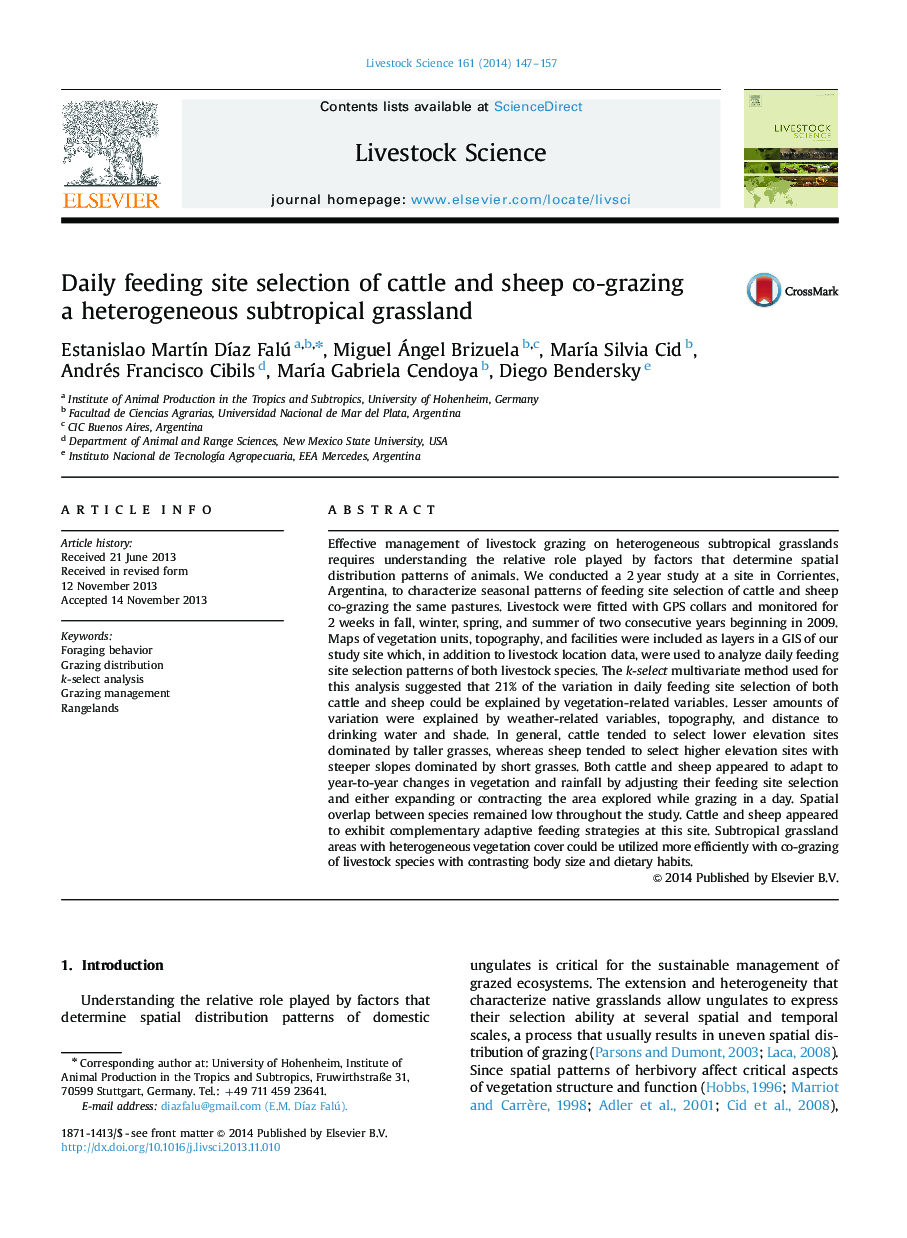| Article ID | Journal | Published Year | Pages | File Type |
|---|---|---|---|---|
| 2447248 | Livestock Science | 2014 | 11 Pages |
Effective management of livestock grazing on heterogeneous subtropical grasslands requires understanding the relative role played by factors that determine spatial distribution patterns of animals. We conducted a 2 year study at a site in Corrientes, Argentina, to characterize seasonal patterns of feeding site selection of cattle and sheep co-grazing the same pastures. Livestock were fitted with GPS collars and monitored for 2 weeks in fall, winter, spring, and summer of two consecutive years beginning in 2009. Maps of vegetation units, topography, and facilities were included as layers in a GIS of our study site which, in addition to livestock location data, were used to analyze daily feeding site selection patterns of both livestock species. The k-select multivariate method used for this analysis suggested that 21% of the variation in daily feeding site selection of both cattle and sheep could be explained by vegetation-related variables. Lesser amounts of variation were explained by weather-related variables, topography, and distance to drinking water and shade. In general, cattle tended to select lower elevation sites dominated by taller grasses, whereas sheep tended to select higher elevation sites with steeper slopes dominated by short grasses. Both cattle and sheep appeared to adapt to year-to-year changes in vegetation and rainfall by adjusting their feeding site selection and either expanding or contracting the area explored while grazing in a day. Spatial overlap between species remained low throughout the study. Cattle and sheep appeared to exhibit complementary adaptive feeding strategies at this site. Subtropical grassland areas with heterogeneous vegetation cover could be utilized more efficiently with co-grazing of livestock species with contrasting body size and dietary habits.
